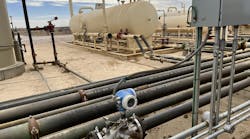The Environmental Protection Agency (www.epa.gov) recognized six winners of the 2007 Water Efficiency Leader (WEL) awards for their efforts in reducing, reusing, and recycling water. Winners were chosen by a panel of national water experts and based on three criteria: leadership, innovation and water saved.
The WEL Awards help foster a nationwide ethic of water efficiency, which the EPA describes as critical to the U.S. economy and quality of life. According to the EPA, demographic shifts, increased demand, and aging water infrastructure are creating a national need for more efficient use of water resources. The EPA recognizes this need and has developed the WEL Awards in addition to other initiatives, such as a product labeling under the WaterSense program and a national organization to foster water efficiency.
Winners of the 2007 WEL Awards are:
Intel Corporation, Ocotillo Campus (Chandler, Ariz.) – Corporate – This company”s three initiatives focused on the collective recycling of 75 percent of the water used during manufacturing thereby reducing their net demand for city water; the take-back of 825 million gallons of treated wastewater from the city’s wastewater plant; the internal re-use of 530 million gallons of water; and treatment of 575 million gallons of water to drinking water standards that is then returned to the local underwater aquifer.
Santa Clara Valley Water District (San Jose, Calif.) – Government – This water management agency helped the community reduce water demand by 55,000 acre-feet, or 12 percent of present demand, through conservation and water recycling with plans to further reduce demand for water.
Frito-Lay (Plano, TX) – Industry – Frito-Lay”s efforts at its 33 facilities resulted in the 39 percent reduction of water consumption per pound of product since 1999.
Lackland Air Force Base (Lackland, TX) – Military – This military base uses comprehensive water conservation measures and purchases recycled wastewater for reuse on the base.
The Kentucky Pollution Prevention Center (KPPC), at the University of Louisville (Louisville, Ky.) – Nongovernmental Organization – The Center finds profitable pollution prevention solutions for the metal industry to reduce the need for, and cost associated with, end-of-pipe controls. One example includes KPPC”s assistance that resulted in a 30 percent net water savings, valued at $50,000 annually, while production at the metal finishing plant increased 50 percent.
Allan Dietemann, Seattle Public Utilities (Seattle, Wash.) – Individual – Mr. Dietemann has promoted water conservation for 20 years, resulting in reduced water consumption for businesses, government, and homeowners alike.
For more information on the winning organizations, visit www.epa.gov/water/wel

